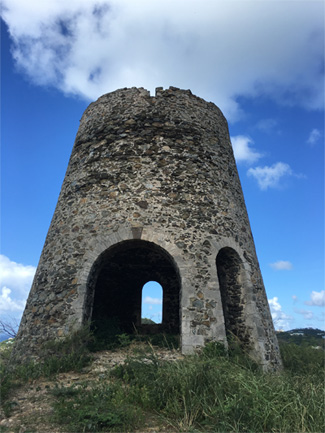Culture: Portrait of Our Soul
Cariso
Cariso
 Consider beginning your foray into Virgin Islands culture by sitting down for a leisurely chat with elders. I had the great fortune of doing so with legendary Cariso master Leona Watson.
Consider beginning your foray into Virgin Islands culture by sitting down for a leisurely chat with elders. I had the great fortune of doing so with legendary Cariso master Leona Watson.
Cariso, I would say, is the melodic memory of our African past. Traditionally, Cariso was sung by our ancestors to relay messages of rebellion as well as to make biting, social commentary.
It was a system of communication that slavemasters could not understand,” says Monique Clendinen, a Crucian writer who has studied Cariso under the tutelage of Watson. Cariso was sung in code, she adds.
Some of the island’s rich history and folklore has been captured in Cariso. Through song, for example, one learns of “General Budhoe, the courageous black liberator who masterminded the 1848 revolution that culminated in the emancipation of the slaves.
The heroic deeds of David Hamilton Jackson, the Crucian teacher and labor leader, have also been archived in song, as well as the exploits of Queen Mary, Queen Matilda and Queen Agnes, the three daring young women who played leading roles in the bloody 1878 insurrection known as the “Fireburn.”
 I spent many hours with Watson more than 20 years ago when I worked as a reporter for the St. Croix Avis. Watson would serve tea as she regaled me with stories of her childhood. And when she sang, as she often did, to illustrate a point, I would be transported back in time to places like “River Gamble Bay ” where life was so hard that one gambled with death on a daily basis.
I spent many hours with Watson more than 20 years ago when I worked as a reporter for the St. Croix Avis. Watson would serve tea as she regaled me with stories of her childhood. And when she sang, as she often did, to illustrate a point, I would be transported back in time to places like “River Gamble Bay ” where life was so hard that one gambled with death on a daily basis.
“Cariso was sung exclusively by groups of women in call and response style while a man played a barrel drum. Women who sang the solo part well were respectfully called Cariso Queens. Today Cariso is sung only by a few elderly ladies during a festivity or upon request,” writes Margot Lieth-Phillip, Ph.D, in the preface of Zoop, Zoop, Zoop: Traditional Music and Folklore of St. Croix, St.Thomas, and St. John.
Watson learned the art from her grandmother and from women like “Tan Tan” Rosa, Sis Anna, and Mary Catherine, whom many elders remember as being a Cariso virtuoso. Unlike Virgin Islands quelbe music, which Watson describes as a local calypso, Cariso is sung in a minor key and sometimes contained words from the Mande dialect. When asked what led to the decline of Cariso in the Virgin Islands, Watson said: “because the young people wanted soul music. They didn’t appreciate the rich cultural heritage that they had.”